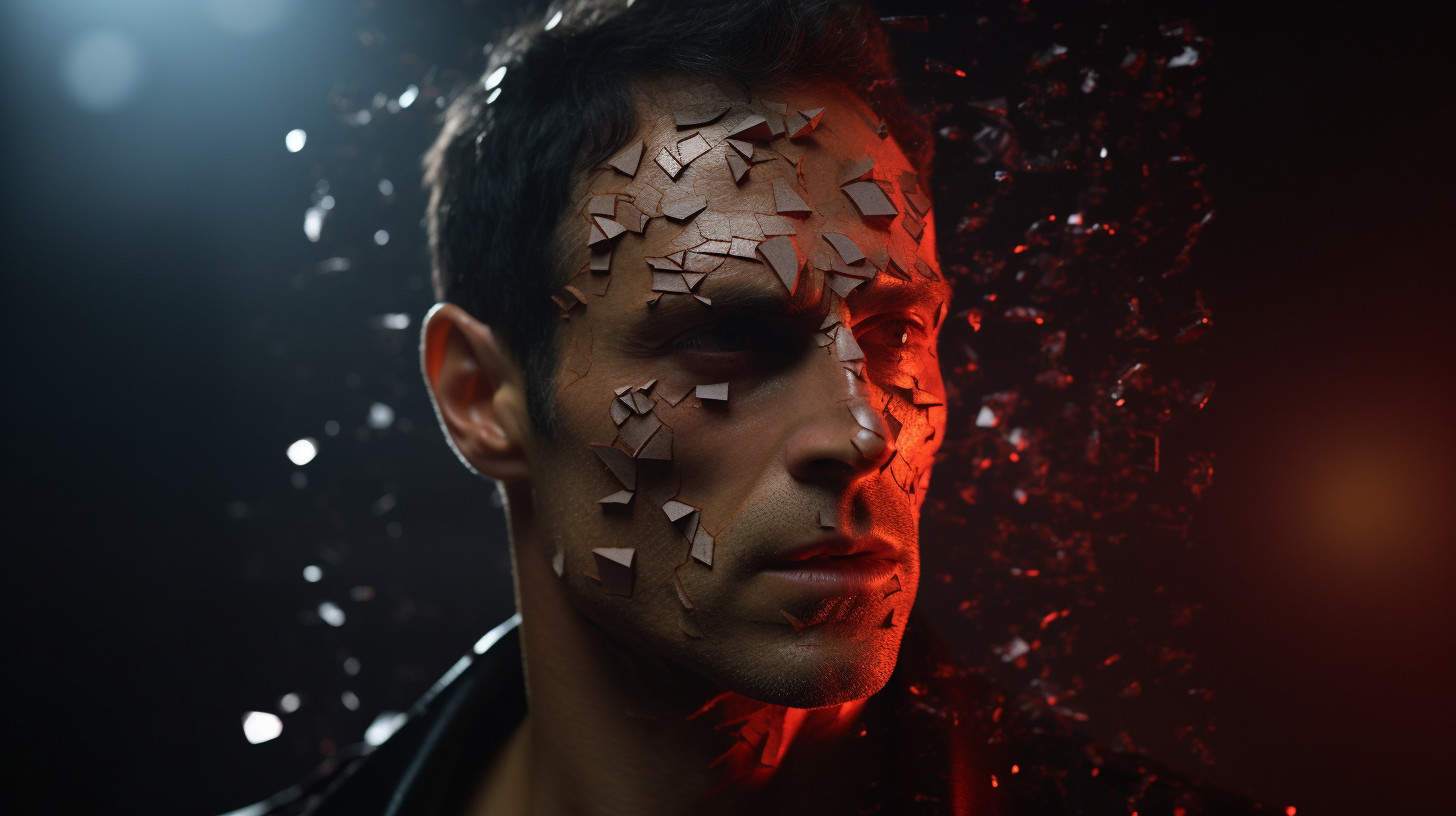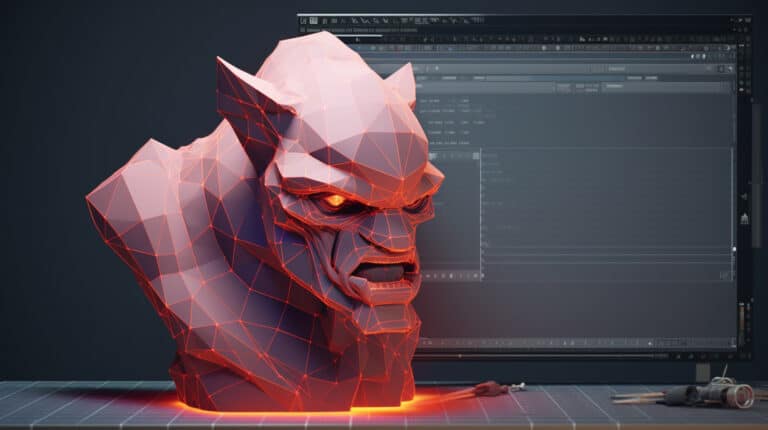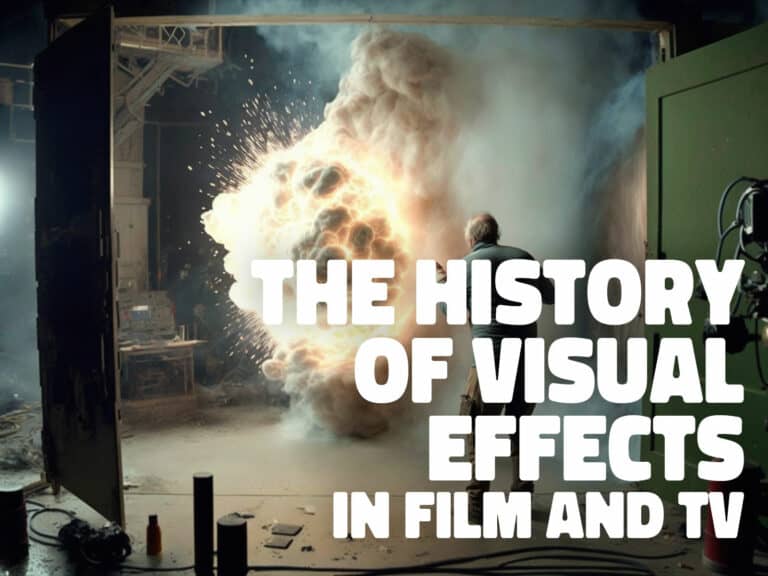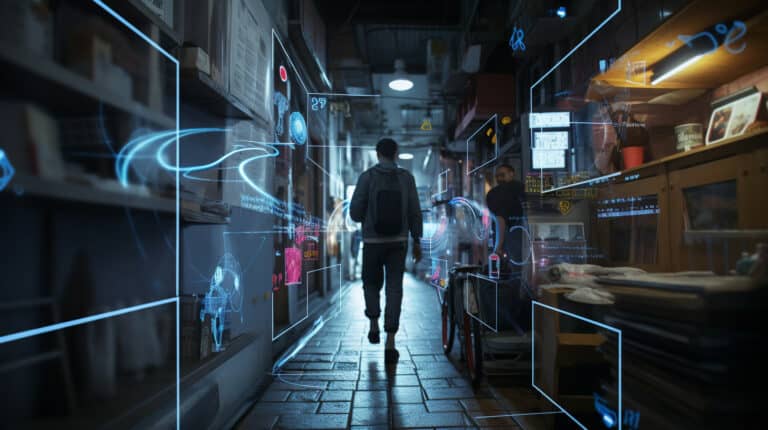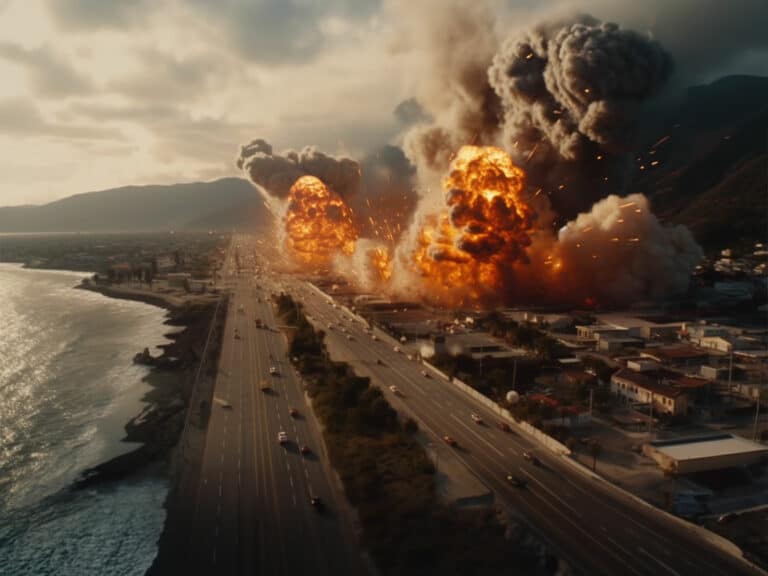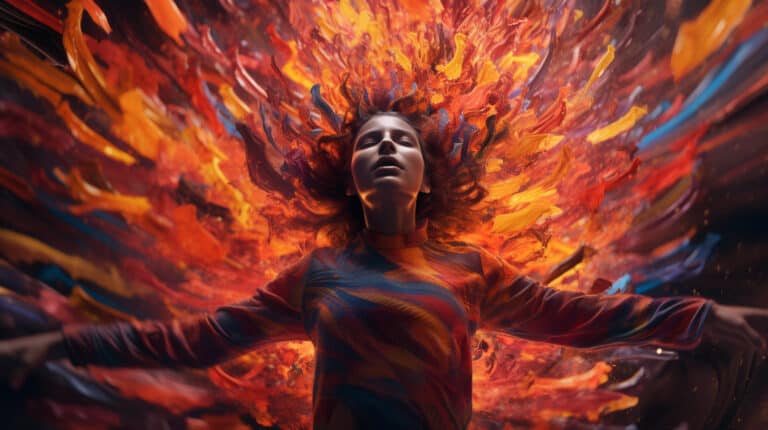Deepfake vs. VFX: How are they Different?
Are you ready to dive into the epic battle between deepfakes and visual effects? Get ready to uncover the secrets and unveil the truth behind these powerful technologies.
In this article, we will explore the mind-bending world of deepfake and the awe-inspiring realm of visual effects. Brace yourself for a comparative analysis like no other as we delve into the impact of these technologies in film and media.
The future of visual effects is about to be transformed, so let’s embark on this thrilling journey together.
Key Points:
- Deepfake technology and VFX both manipulate visual content, but they have distinct techniques and applications.
- Deepfake raises concerns about disinformation and privacy, while VFX is regulated in the filmmaking industry.
- Deepfake poses challenges to traditional VFX techniques and requires adaptation in the industry.
- VFX artists must maintain authenticity and integrity in their work and navigate the ethical implications of their craft.
The Rise of Deepfake Technology
You may have noticed an increasing prevalence of deepfake technology in recent years. This groundbreaking technology has captivated the world and raised concerns about its potential implications.
Here are three reasons why the rise of deepfake technology is significant:
- Realistic Manipulation: Deepfakes have the ability to seamlessly manipulate videos, replacing faces and altering speech, making it difficult to distinguish between what’s real and what’s fake.
- Misinformation Threat: The rise of deepfakes poses a significant threat to the spread of misinformation, as they can be used to create convincing fake news, compromising trust and distorting public perception.
- Privacy Concerns: Deepfake technology raises serious privacy concerns, as anyone’s face can be easily superimposed onto explicit or compromising content without their consent, potentially leading to reputational damage and emotional distress.
As we explore the rise of deepfake technology, it’s important to also examine the evolution of visual effects (VFX) and how these two technologies intersect to shape the future of visual storytelling.
The Evolution of Visual Effects (VFX)
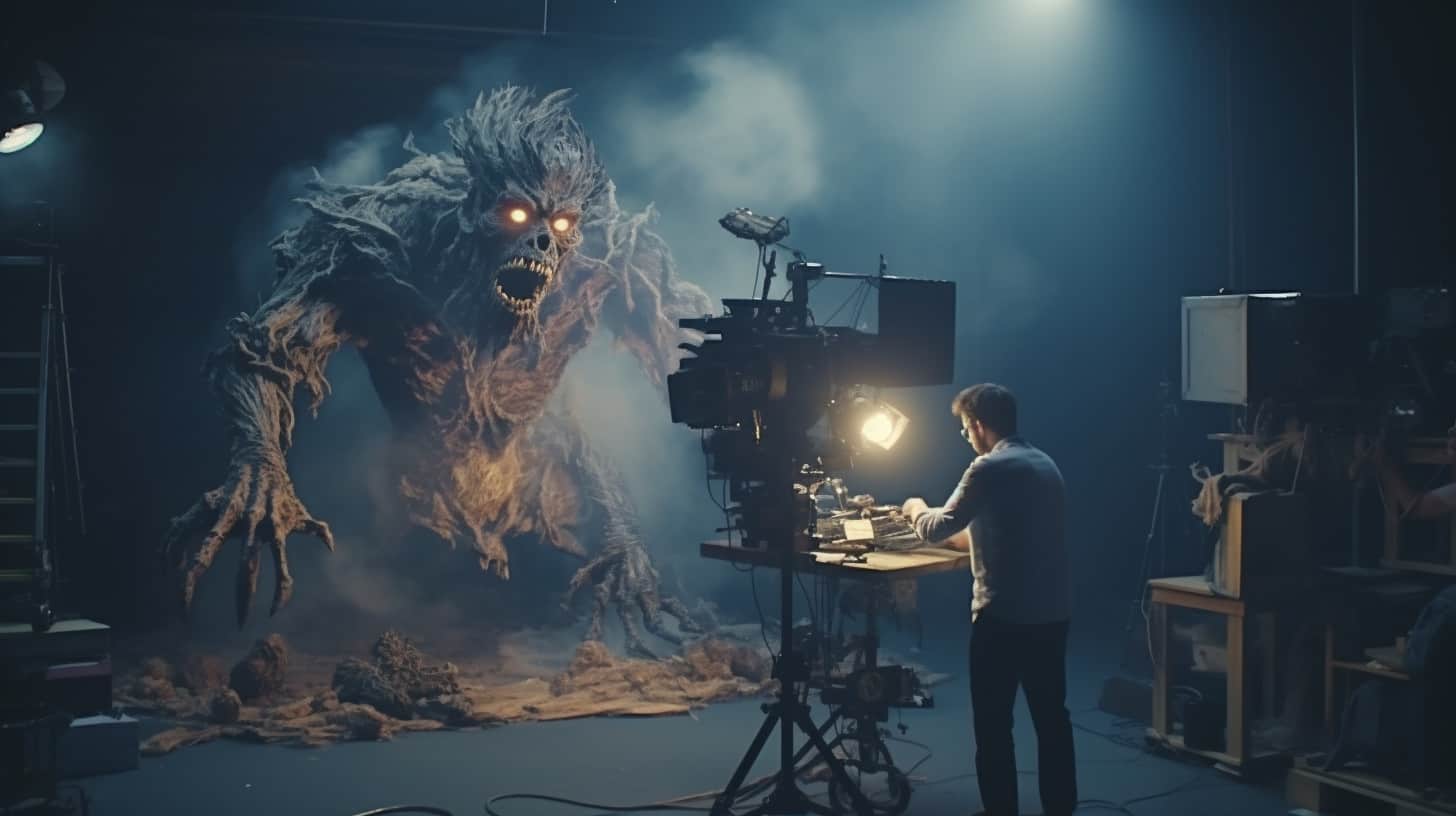
As we delve into the evolution of Visual Effects (VFX), it becomes evident that this technology has played a crucial role in shaping the world of visual storytelling. From the early days of practical effects to the advanced digital techniques used today, VFX has continuously pushed the boundaries of what’s visually possible on the big screen.
With each passing year, filmmakers and artists have found new ways to create spectacular and immersive worlds, seamlessly blending reality and imagination. VFX has become an integral part of the filmmaking process, enhancing storytelling, creating breathtaking action sequences, and bringing fantastical creatures to life.
As technology continues to advance, the possibilities for VFX are limitless, promising even more awe-inspiring visual experiences for audiences around the world.
I. Understanding Deepfake Technology
Let’s take a closer look at deepfake technology and its implications.
First, we need to define deepfake: it refers to the creation of synthetic media using AI and machine learning.
Understanding the mechanics behind deepfake technology is crucial, as it relies on advanced algorithms to manipulate and generate realistic videos.
However, we must also consider the ethical implications that arise from the potential misuse of this technology, such as spreading misinformation and damaging reputations.
Defining Deepfake: A Closer Look at Synthetic Media
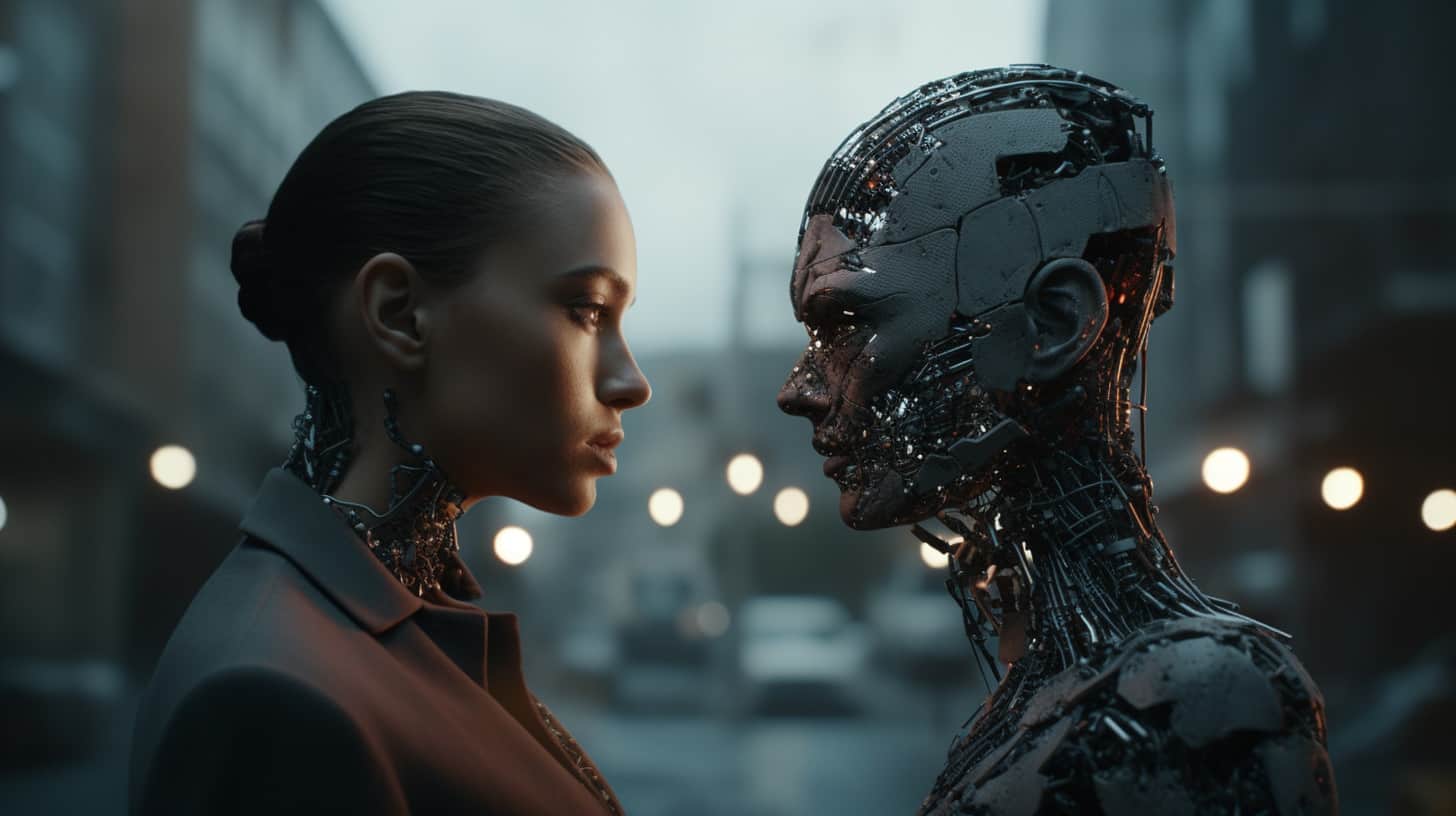
Take a closer look at the technology behind deepfake and gain a better understanding of synthetic media.
Deepfake is a form of synthetic media that uses artificial intelligence to create manipulated videos or images that appear to be real.
Here are three key aspects to consider:
- Advanced Machine Learning Techniques: Deepfake technology relies on sophisticated machine learning algorithms that analyze and manipulate existing media to create realistic and convincing fakes.
- Realistic Facial Reenactment: Deepfake algorithms excel at capturing and mimicking facial expressions, enabling them to superimpose one person’s face onto another’s body with remarkable accuracy.
- Ethical and Legal Implications: The rise of deepfake technology raises concerns about privacy, misinformation, and the potential for malicious use. As the technology continues to evolve, it’s crucial to develop strategies to detect and combat deepfakes effectively.
Understanding the intricacies of deepfake technology is essential in order to navigate the challenges it poses and develop safeguards against its misuse.
The Mechanics Behind Deepfake: AI and Machine Learning
To understand deepfake technology, you need to delve into the mechanics of AI and machine learning.
Deepfakes are created through a complex process that involves training artificial intelligence algorithms on vast datasets of images and videos. These algorithms learn to analyze and manipulate facial expressions, movements, and speech patterns, enabling them to generate highly realistic fake videos.
Machine learning plays a crucial role in this process by allowing the AI to continuously improve its abilities through trial and error. By feeding the AI with more data, it becomes better at mimicking human behavior, making it increasingly difficult to distinguish deepfakes from real videos.
As AI and machine learning continue to advance, so too will the sophistication of deepfake technology, raising important ethical and societal concerns.
The Ethical Implications of Deepfake Technology
Understanding the mechanics behind deepfake technology, you can now explore the ethical implications of this powerful tool. As the line between reality and fiction becomes increasingly blurred, deepfakes raise a host of ethical questions that demand our attention.
Here are three key considerations:
- Manipulation and Misinformation: Deepfakes have the potential to deceive and manipulate viewers by presenting fake information as genuine. This raises concerns about the spread of misinformation and the erosion of trust in media.
- Privacy and Consent: Deepfake technology can be used to create explicit and non-consensual content, infringing upon individuals’ privacy and causing immense harm. Consent becomes a critical issue in a world where anyone can be digitally impersonated.
- Legal and Moral Responsibility: The rise of deepfakes challenges our legal and moral frameworks. Who’s responsible when deepfakes are used for malicious purposes? Should there be regulations to govern the creation and dissemination of deepfakes?
Exploring these ethical implications is crucial to understanding the potential impact of deepfake technology on society.
II. The Power of Visual Effects (VFX)
Get ready to witness the magic of visual effects (VFX) as we embark on a journey into the world of practical effects and digital wizardry.
From the early days of cinema to the present, VFX has played a crucial role in shaping the film and entertainment industry.
Unleashing the Magic: Exploring the World of VFX
You can harness the immense power of visual effects (VFX) to create stunning and immersive worlds on the screen. With VFX, you have the ability to transport your audience to fantastical realms, bend the laws of physics, and bring imaginary creatures to life.
- Unleashing Imagination: VFX allows you to bring your wildest ideas and imagination to fruition, pushing the boundaries of what’s possible and creating truly unique experiences.
- Enhancing Storytelling: VFX can enhance the narrative by visually representing abstract concepts, emotions, and complex ideas, making them more accessible and engaging for the audience.
- Creating Realism: VFX has the power to seamlessly integrate computer-generated elements into live-action footage, making the impossible appear real and blurring the line between fantasy and reality.
In the hands of skilled artists and technicians, VFX can truly work magic, captivating audiences and elevating the storytelling experience to new heights.
From Practical Effects to Digital Wizardry: A Brief History
VFX has revolutionized the world of filmmaking, transforming practical effects into digital wizardry. Gone are the days when filmmakers relied solely on physical props and stunts to create jaw-dropping visuals.
With the advent of VFX, filmmakers now have the power to bring their wildest imaginations to life on the big screen. From creating larger-than-life creatures to crafting breathtaking landscapes, VFX has opened up a whole new realm of possibilities.
It has become an essential tool in the filmmaker’s arsenal, allowing them to push the boundaries of storytelling and immerse audiences in fantastical worlds.
As we delve deeper into the role of VFX in the film and entertainment industry, we’ll see just how vital this technology has become in shaping the way we experience cinema.
The Role of VFX in Film and Entertainment Industry
Continuing from the previous subtopic, let’s explore the immense power of visual effects (VFX) in shaping the film and entertainment industry. VFX isn’t just about creating spectacular explosions or fantastical creatures; it goes beyond that.
Here are three ways VFX is revolutionizing the industry:
- Creating Realistic Environments: VFX allows filmmakers to transport audiences to breathtaking worlds that were once unimaginable. From the lush jungles of Pandora in ‘Avatar’ to the bustling cityscape of Wakanda in ‘Black Panther,’ VFX brings these environments to life.
- Enhancing Performances: VFX can transform actors into larger-than-life characters, alter their appearances, and even resurrect the deceased. It gives filmmakers the ability to push the boundaries of storytelling and create unforgettable performances.
- Pushing Technical Boundaries: VFX is constantly evolving, pushing the boundaries of what’s possible on screen. From groundbreaking motion capture technology to seamless integration of live-action and CGI, VFX continues to challenge the limits of imagination.
In a world where anything is possible, visual effects serve as the catalyst for bringing dreams to life on the silver screen.
III. Deepfake vs VFX: A Comparative Analysis
Get ready to compare and contrast the world of deepfake with the realm of VFX.
Discover the striking similarities and differences between these two powerful visual effects techniques.
Explore the profound impact that deepfake has on the VFX industry and the challenges faced by VFX artists in this era of rapidly advancing technology.
The Similarities and Differences Between Deepfake and VFX
Comparing deepfake and VFX involves examining the processes and techniques used in creating realistic visual effects. While both deepfake and VFX aim to manipulate and enhance visual content, there are distinct differences between the two. Here are three key points to consider:
- Technology: Deepfake utilizes artificial intelligence algorithms to manipulate and replace faces, often resulting in highly realistic but potentially misleading content. VFX, on the other hand, relies on a combination of computer-generated imagery (CGI), special effects, and compositing techniques to create visually stunning yet fictional elements.
- Purpose: Deepfake is primarily used for entertainment and social media purposes, often creating viral and sometimes controversial videos. VFX, on the other hand, is commonly employed in the film industry to enhance storytelling, create fantastical worlds, or bring imaginary creatures to life.
- Ethical concerns: Deepfake raises serious ethical concerns due to its potential for misuse, such as spreading disinformation or violating privacy. VFX, while capable of enhancing reality, is generally more regulated and controlled within the filmmaking industry.
The Impact of Deepfake on the VFX Industry
To fully understand the impact of deepfake on the VFX industry, it’s crucial to delve into a comparative analysis of the two visual effects techniques.
Deepfake, with its ability to manipulate and generate hyper-realistic videos, poses a significant challenge to the traditional VFX techniques used in the industry. While VFX artists meticulously create visual effects from scratch, deepfake uses artificial intelligence algorithms to seamlessly blend real and synthetic elements.
This fundamental difference has far-reaching implications for the future of the VFX industry. As deepfake technology continues to evolve and become more accessible, VFX artists face the daunting task of adapting their skills and staying relevant in a rapidly changing landscape.
The challenges faced by VFX artists in the age of deepfake are manifold, and require innovative solutions to ensure the continued growth and success of the industry.
The Challenges Faced by VFX Artists in the Age of Deepfake
As a VFX artist navigating the age of deepfake, you face the challenge of effectively analyzing the differences between deepfake and traditional VFX techniques. In this battle of visual effects, here are three key challenges you encounter:
- Authenticity: Deepfake technology has the ability to create highly convincing fake videos, making it increasingly difficult to distinguish between real and manipulated content. As a VFX artist, you must ensure that your work maintains a sense of authenticity and integrity.
- Ethical Concerns: Deepfake raises serious ethical concerns, as it can be used to deceive and manipulate people. As a VFX artist, you must navigate the ethical implications of your work and ensure that you’re using your skills responsibly.
- Technical Complexity: Deepfake techniques require advanced AI algorithms and deep learning models, making them more complex than traditional VFX methods. As a VFX artist, you must stay up-to-date with the latest advancements in technology and constantly adapt your skills to meet the demands of the industry.
In the battle between Deepfake and VFX, it’s crucial for VFX artists to rise to the challenges and continue to push the boundaries of their craft.
IV. Deepfake in Film and Media
Are deepfakes enhancing the storytelling in cinema or threatening the authenticity of the medium? This is a question that has sparked much debate in the film industry.
Furthermore, the influence of deepfakes on news and journalism can’t be ignored, as they’ve the potential to create misinformation and further erode trust in media.
As the battle against deepfakes continues, both legal and technological countermeasures are being developed to combat this growing threat.
Deepfake in Cinema: Enhancing Storytelling or Threatening Authenticity
When considering the impact of deepfake in cinema, it’s essential to acknowledge the potential for enhanced storytelling while also recognizing the potential threat to authenticity.
Deepfake technology allows filmmakers to push the boundaries of imagination, bringing to life characters and scenarios that were once impossible. However, this power comes with a price. Deepfakes have the potential to blur the line between reality and fiction, raising questions about the authenticity of the stories being told.
Will audiences still be able to trust what they see on the screen? Will the art of filmmaking lose its credibility? These are the pressing concerns that arise when deepfake technology infiltrates the world of cinema.
As we delve deeper into the influence of deepfake on news and journalism, we must address these fundamental questions about the future of storytelling in film.
The Influence of Deepfake on News and Journalism
You can see the influence of deepfake on news and journalism in film and media. Deepfake technology has the potential to disrupt the way news is reported by creating realistic and convincing fake videos that can spread misinformation quickly. With the ability to manipulate images and videos, deepfake poses a significant threat to the credibility of news sources and journalists. It becomes increasingly challenging to differentiate between real and fake content, making it crucial for journalists to exercise caution and verify information before reporting. To better understand the impact of deepfake on news and journalism, let’s take a look at the following table:
| Deepfake in Film and Media | Influence on News and Journalism |
|---|---|
| Enhances storytelling through visual effects | Undermines the credibility of news sources |
| Provides creative opportunities for filmmakers | Increases the need for fact-checking |
| Offers a new tool for narrative manipulation | Requires journalists to adapt and evolve |
As deepfake technology continues to advance, it is essential for the media industry to stay vigilant and find ways to combat the spread of fake news while preserving the integrity of journalism.
The Battle Against Deepfake: Legal and Technological Countermeasures
Deepfake technology has sparked a battle in the film and media industry, as legal and technological countermeasures are being implemented to combat its detrimental effects. The fight against deepfakes is an ongoing struggle, with various strategies being employed to safeguard the authenticity and integrity of film and media content.
Here are three key countermeasures being utilized:
- Increased Awareness and Education: Promoting awareness among filmmakers, actors, and the general public about the existence and potential dangers of deepfakes is crucial. Education on how to identify and report deepfakes helps in preventing their proliferation.
- Advanced Detection and Authentication Tools: Developing sophisticated algorithms and software that can detect and authenticate manipulated content is essential. These tools can aid in distinguishing deepfakes from genuine media, enabling swift action against their dissemination.
- Strict Legal Frameworks: Enacting comprehensive laws and regulations to deter the creation and distribution of deepfakes is vital. Legal repercussions serve as a deterrent and ensure accountability for those involved in malicious deepfake activities.
V. The Future of Visual Effects: Adapting to Deepfake Technology
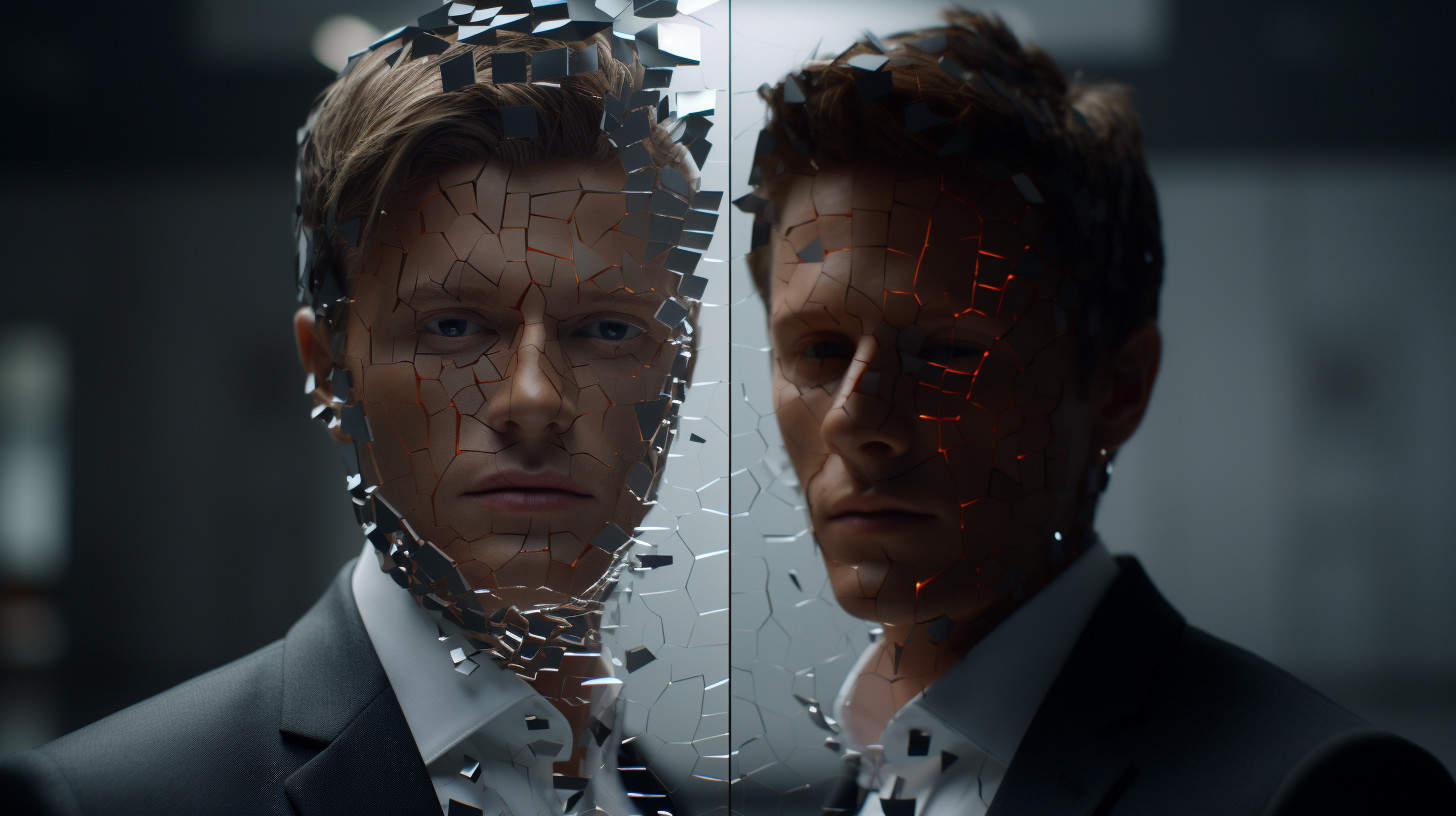
Are you ready for the future of visual effects? Innovations in VFX are constantly pushing the boundaries of realism, but the rise of deepfake technology presents a new challenge and opportunity for the industry.
Imagine a world where VFX and deepfake seamlessly integrate, creating mind-bending visual experiences. As this integration becomes more prevalent, it becomes essential for the VFX industry to prioritize education and ethics in order to navigate the ethical and creative implications of this technology.
Innovations in VFX: Pushing the Boundaries of Realism
Visual effects artists are constantly pushing the boundaries of realism, using innovative techniques to bring the unimaginable to life. As technology advances, so does their ability to create mind-boggling visual effects that captivate audiences. Here are three ways these artists are pushing the boundaries of realism:
- Cutting-edge motion capture: With the help of advanced motion capture technology, VFX artists can now capture the most intricate details of human movement, resulting in hyper-realistic animations that blur the line between reality and fiction.
- AI-powered simulations: Artificial intelligence is revolutionizing the world of VFX by enabling artists to create incredibly realistic simulations, such as realistic water and fire effects, that were once deemed impossible.
- Photorealistic rendering: The advancements in rendering technology have made it possible to create scenes that are indistinguishable from reality. From lifelike environments to convincing character renderings, photorealistic rendering is taking visual effects to new heights.
These innovations not only enhance the visual experience but also challenge the boundaries of what’s considered real, leaving audiences in awe of the limitless possibilities that VFX can offer.
Collaborative Efforts: VFX and Deepfake Integration
As we delve into the future of visual effects and adapt to deepfake technology, you’ll witness the collaborative efforts between VFX and deepfake integration, taking the art of visual storytelling to new and unprecedented heights. The combination of these two powerful tools opens up endless possibilities for filmmakers and content creators.
| VFX | Deepfake |
|---|---|
| Enhances visual elements | Alters or replaces faces |
| Requires extensive post-production work | Utilizes AI algorithms |
| Expensive and time-consuming | More accessible and cost-effective |
| Used for creating fantastical worlds | Focuses on realistic portrayals |
| Widely used in big-budget films | Gaining popularity in various industries |
| Has been a staple in the industry for decades | A relatively new technology |
The integration of VFX and deepfake technology allows for seamless blending of real and synthetic elements, creating a visually stunning and immersive experience for the audience. However, it also raises ethical questions and challenges regarding the authenticity of visual content. As the technology continues to evolve, it is crucial for filmmakers to strike a balance between pushing the boundaries of creativity and maintaining the integrity of the storytelling process.
The Importance of Education and Ethics in the VFX Industry
You need to prioritize education and ethics in the VFX industry as you navigate the future of visual effects and adapt to the emergence of deepfake technology. With the rapid advancements in deepfake technology, it becomes imperative to stay informed and up-to-date with the latest tools, techniques, and ethical considerations.
Here are three key reasons why education and ethics should be at the forefront of your VFX journey:
- Maintaining industry standards: Education ensures that you’re equipped with the necessary skills to meet industry standards, while ethics guide you in making responsible choices.
- Protecting your reputation: By upholding ethical practices and staying knowledgeable, you safeguard your professional reputation in an industry that demands integrity.
- Preserving the art form: Education not only enhances your technical abilities but also fosters creativity, allowing you to push the boundaries of visual effects while maintaining the essence of the art form.
As you strive for excellence in the VFX industry, remember that education and ethics are the cornerstones that will help you navigate the ever-changing landscape of visual effects.
Conclusion
Embrace the future by finding a delicate balance between deepfake technology and traditional visual effects.
As the battle between deepfake and VFX continues, it’s important to recognize the enduring power of visual effects in the digital age.
While deepfake has its merits, the skill and artistry of VFX professionals can’t be replaced, ensuring their relevance and importance in the ever-evolving world of visual storytelling.
Embracing the Future: Finding a Balance Between Deepfake and VFX
Finding a balance between deepfake and VFX in the future requires understanding the potential of both technologies and making informed decisions about their application. It’s a delicate dance between harnessing the power of AI-driven deepfakes and preserving the artistry of traditional VFX.
Here are three key considerations to keep in mind:
- Ethical implications: Deepfakes can be used for malicious purposes, raising concerns about privacy and consent. VFX, on the other hand, is a more controlled and regulated process.
- Artistic integrity: VFX allows for the creation of fantastical worlds and creatures, while deepfakes excel at recreating human likeness. Balancing these two approaches is essential to maintain creative diversity.
- Impact on the industry: Deepfake technology has the potential to disrupt the VFX industry, but it also opens up new possibilities for collaboration and innovation.
As we navigate this evolving landscape, it’s crucial to acknowledge the enduring power of visual effects in the digital age.
The Enduring Power of Visual Effects in the Digital Age
As we wrap up the discussion on the enduring power of visual effects in the digital age, it’s important to recognize the significant impact they’ve had on the entertainment industry.
Visual effects have revolutionized the way stories are told on screen, transporting viewers to fantastical worlds and creating breathtaking spectacles. From the jaw-dropping visuals of Avatar to the seamless integration of CGI characters in Avengers: Endgame, visual effects have become an integral part of the movie-watching experience.
But their influence extends beyond just movies. Television shows, video games, and even advertising campaigns rely on the magic of visual effects to captivate audiences and enhance the storytelling.
In the digital age, where technology is constantly advancing, visual effects continue to push the boundaries of what’s possible, creating new and immersive experiences for audiences worldwide. Their enduring power lies in their ability to transport us to unimaginable worlds and make the impossible feel real.
Frequently Asked Questions
What Are Some Common Ethical Concerns Associated With Deepfake Technology, and How Does It Differ From Traditional Visual Effects?
Some common ethical concerns associated with deepfake technology include the potential for misinformation and the violation of privacy. Deepfake differs from traditional visual effects by using AI to create realistic, but manipulated, videos.
Can Deepfake Technology Be Used for Positive Purposes in the Film and Media Industry?
Yes, deepfake technology can be utilized for positive purposes in the film and media industry. It allows for seamless integration of actors, enhances storytelling, and opens up new creative possibilities. Embrace its potential!
How Do Deepfake Algorithms Work and What Are the Main Challenges in Detecting Deepfake Videos?
Deepfake algorithms manipulate videos by substituting or altering faces, raising concerns about their authenticity. Detecting deepfakes poses challenges due to advancements in AI technology, making it crucial to develop robust detection methods.
Are There Any Legal Implications or Regulations in Place Regarding Deepfake Technology?
Are there any legal implications or regulations in place regarding deepfake technology? Yes, there are. Deepfakes raise concerns about privacy, identity theft, and the spread of misinformation, leading to the need for legislation to address these issues.
How Do Visual Effects Artists Perceive the Rise of Deepfake Technology and What Steps Are Being Taken to Ensure the Integrity and Authenticity of Their Work?
Visual effects artists perceive the rise of deepfake technology as a threat to the integrity and authenticity of their work. They are taking steps to ensure their creations remain unique and untouched by the manipulative power of deepfakes.

